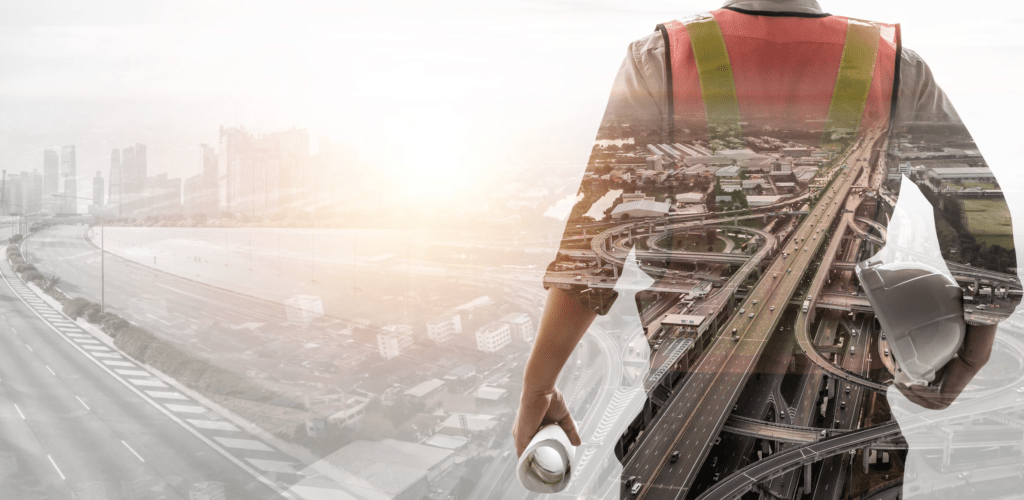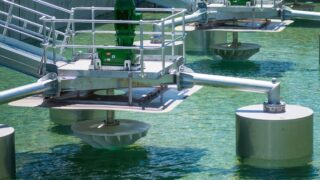EPC Design-Build
If you work for an engineering, procurement, or construction (EPC) firm that specializes in water & wastewater treatment and are interested in learning about how project delivery in the industry is rapidly changing, this article is for you.
EPC project delivery method in the water industry is through a design-bid-build process. Over time the design-bid-build method has expanded into other types of delivery methods. Such as construction management at-risk (CMAR), progressive design-build (PDB), fixed price design-build (FPDB), and design-build-operate (DBO).

These were implemented to adapt to innovative changes around the world. Making the project delivery process more organized with the hope of risk reduction and time-saving advantages, all while maintaining the same quality standards.
Regardless of the type of procurement process you currently use there is always room to accelerate project timelines & approvals and innovative technologies like the Transcend Design Generator can help you exceed your margin & growth goals.
The use of software & innovation in the Design-Bid-Build (or other delivery models) for engineering wastewater treatment plants can ensure these projects are more cost and time-efficient, without losing project quality. Adoption of innovative technologies is important as the globe continues to progress and the environment around us changes. Ensuring that we are serving the demands of the water and wastewater sector, as well as society at large.
Design Bid-build
In a traditional design-bid-build project the owner generally has two contractual relationships to maintain. There are designers that create the framework on how to build, and construction contractors who do the actual building. As the design engineering firm works to a defined scope of work, the construction phase cannot start until the designs are 100 % completed by engineering and approved by the project owner.
This often causes delays in the project scope of work as engineering can take months to get the final design approval. Having no overlap between the two subcontractors can create several risks to the project and often leads to time constraints and budget overruns.
After the owner approves the designs, the engineering subcontractor is now off the hook of being held responsible for any interruptions that may go wrong during the construction phase. When design-bid-build is used to deliver a new plant or an upgrade to an existing water or wastewater treatment plant, this shift of risk often causes confrontations, finger-pointing, and numerous change orders that result in a blown budget.
Construction Management at-risk (CMAR)
In the construction management at-risk delivery method, the construction manager commits to deliver a project at a guaranteed price. The construction manager works with the project owner and the design engineer prior to construction starting. Assuring what is requested by the owner is being fulfilled within budget and within the time range specified.
However, like the design-bid-build strategy, they often have the same disputes between design intent and construction feasibility. If this happens, the construction manager becomes financially liable for the inconsistencies between the parties and for rework related to the construction and design of the water or wastewater treatment plant.

Progressive Design-build (PDB)
Progressive design-build tenders try to avoid some of the common pitfalls in project delivery by providing an added measure of procurement flexibility. This delivery method focuses on two phases during the subcontractor selection process.
Phase one focuses on the best value. Phase two focuses on qualifications to see if involved parties can meet or exceed the needs of the project. Due to the time and resources necessary to develop the best delivery method with the best value, this method often takes a bit longer for involved parties to generate proposals. The key selection component in this method is qualification over price.
This method strictly sticks to the qualification-based selection to contract. But, in turn, may take longer to get into the second phase of selection. The prequalification phase is especially crucial for water and wastewater treatment projects that need advanced technology and might take years to complete.

The prequalification procedure may ensure that the owner’s contractual partner has the technical competence to solve issues as they occur. As well as the financial strength to support a long-term project endeavor.
In contrast, the best possible solution for enhancing engineering subcontractors’ suitability during the selection process is by adding Transcend’s Design Generator into their capabilities.
Subcontractors can use the TDG tool to swiftly include a range of designs into their proposals. Including sophisticated technology that is essential for the project’s success. This technology will also help subcontractors enhance their reputation by producing design ideas in 10% of the time it now takes. Allowing them to become more actively competitive in the industry and achieving successful results that will boost the firm’s credibility.
Fixed Price Design-Build (FPDB)
The fixed-price design-build project delivery approach begins with the owner clearly defining the project requirements and scope of work. This allows the design-build proposer to estimate the project cost early in the procurement process. Based on the owner’s description of the project requirements or a conceptual design supplied in the procurement documents, the design-builder agrees to design and construct the project for a certain price and timeline.
This procurement method can be more expensive for the owner due to the resources required to create more detailed procurement documents. It also may raise the owner’s construction costs by limiting design-builder design flexibility. However, this delivery method can again be more economical by implementing Transcend’s Design Generator (TDG) into the fixed price design-build process.

TDG allows you to develop proposals with as much flexibility as you need without incurring additional expenditures. Importantly, you’ll have complete indicative designs (including a BIM model with 3D views) in your hands within minutes after entering your specs. By creating the best potential scenario with the greatest quality and the inclusion of all needs specified by the owner, the software lowers project risks, adding value and credibility to your organization.
Design-Build Operate (DBO)
Design, permits, procurement, construction, and testing, as well as operation and maintenance, are all part of the design-build-operate delivery process within a single contract. As a result, project delivery and services to the owner do not end with a final acceptance.
They continue for a certain length of time. TDG is an essential tool for streamlining the design, permit, and procurement processes. Delivering a wide breadth of engineering-grade output documents (equipment list, civil BOQ, design basis document, etc.) in the earliest stages of the project.
The Shift In Design-Build Today
A well-drafted design-build contract holds all parties accountable since it covers all areas of design and construction. As well as assigning an exclusive responsibility for resolving disputes between design and construction subcontractors. If the project does not fulfill the client’s expectations. This design-build contracting method necessitates coordination between the design engineer and the construction contractor during the proposal generation process.
This reduces the likelihood of work interruptions by detecting early opportunities to optimize schedules through work sequencing, and time spent debating whether an issue is caused by inadequate construction or poor design is no longer wasted.
When the building contractor starts putting the plan into action while gaining schedule savings, the interchange of ideas between these parties helps them avoid difficulties. One of the most common arguments for utilizing the DB project delivery strategy is the potential to complete projects faster. By needing less extensive paperwork, it is possible to begin construction for the first stages of a project while comprehensive engineering is being completed for subsequent sections. This reduces the amount of time spent in the DBB process producing duplicate and unnecessary information.

Regardless of the design-build strategy you presently employ, the Transcend Design Generator tool aids in the streamlining of the first phases of engineering designs. Enabling
you to become more competitive in the industry. It not only speeds up the process of creating project proposals but contributes to significant corporate development by making more ‘go’ decisions.
It’s critical to stay ahead of the curve as design automation takes control and fixed design-build-bid work becomes the new normal. Having the capacity to provide more detail to customers in the same amount of time utilizing 3D models and dynamic biological simulation results will increase customer satisfaction as well as brand equity. Engineers will be happier if they can do what they love without having to spend cumbersome non-billable hours on manual, repetitive tasks.
Invest in your future now by configuring your preliminary designs with TDG and enjoy greater margins, more work, and an overall increase in employee satisfaction!







